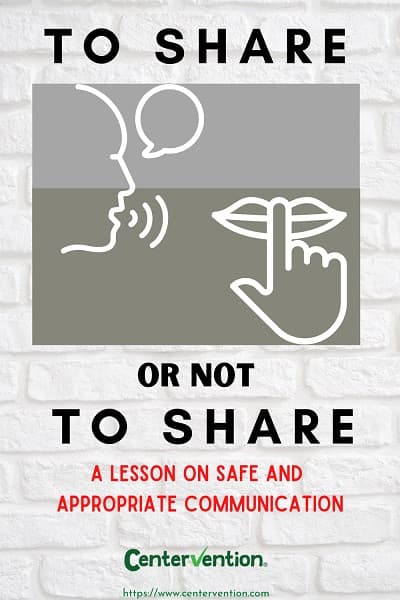We’ve created these communication skill worksheets to guide students through the different phases of appropriate and safe conversations as they meet and make friends, both in real life and digitally.
Picture this: A young teenager plays video games with other kids all over the world: from London to California, and from across town to the neighbor next door. With today’s technology, people we connect with online can feel like real-life friends, even if we don’t truly know who they are. Because of this false security, the teenager freely shares with another gamer through the microphone that their family is planning a beach vacation to Destin and that they’ll be gone for a week– a simple aside that potentially creates an unsafe situation when too much personal information gets leaked. Since our digital age provides many outlets in which older students can enjoy social engagement, learning the boundaries for safe communication is more important than ever.
But practicing appropriate conversation skills shouldn’t wait until the teenage years, and elementary children— many of whom may also overshare too many personal details—can benefit from guidance in this area, too. For example, topics that are okay with family may not be appropriate to share with a stranger, and conversations that are appropriate with friends on the school yard may not be meant for the holiday dinner table at Grandma’s! While teaching kids to initiate and communicate with others is crucial to making friends and thriving socially, students also need to learn what topics of conversation are appropriate with different types of people.
Recommended Grade Level: Elementary and Middle
SEL Skill(s): Communication
Duration: 30 minutes
Materials:
- Chart Paper
- Student Cards (Available when logged in to your Centervention Educator Account)
Communication Skill Worksheets Instructions
Prep: You can choose to complete the activity through a whole group discussion or as a partner game, or you can allow students to complete independently and then share and compare their answers. Depending on the delivery method you choose, the number of copies of each handout you need will vary.
Prompt: The prompts provided are graduated for elementary or middle school grades and correspond with the appropriate cards, however any students may benefit from both.
Elementary: Gather students and ask them the following questions, allowing time for discussion:
- What is the difference between a friend and a stranger?
- What is the difference between a friend and your family?
- What’s something you might talk about with your family but not a friend?
- What’s something you can talk to a friend about, but not a stranger?
Tell students that it’s important to remember that there is a time, a place, and a person for every conversation, and that today you will practice deciding what kinds of things you might say to different kinds of people.Allow students to take turns reading cards from the Elementary To Share or Not to Share page and discuss choosing a space for each on the Social Initiation: Appropriate Topics Mat. Alternatively, students may work in pairs sorting through the cards together or can perform the activity on their own. Note that there will be more cards than spaces on the board, and also that students may sort or defend the cards differently. As long as they have your guidance in reviewing final decisions for what’s appropriate, they will have learned the important basics of safe sharing.
Middle School: Gather students and ask them the following questions, allowing time for discussion:
- What are some sites you might visit to meet, talk to, or play games with other people?
- How can you tell if you know the person in real life?
- How can you tell if someone is telling the truth about who they are?
- Why is it important to be careful with the information you share with others online?
Tell students that today they will practice deciding what information is okay to share with others and what information might be unsafe to discuss online. Allow students to take turns reading cards from the Middle School To Share or Not to Share page and discuss choosing a space for each on the To Share or Not to Share Computer Mat. Alternatively, students may work in pairs sorting through the cards together or can perform the activity on their own. Provide time for students to discuss and debate choices, as there may be some online platforms where more information is appropriate than others. Students may notice that most answers actually belong in the Not To Share pile, and this lesson is a great time to have a conversation about why and how that information can be unsafe to pass along online.
Closure: Whether in Elementary or Middle School, all students can continue the exercise by coming up with other examples of safe and appropriate sharing. You should also discuss and consider making a chart titled Never Share With Strangers, and include items like my home address, my schedule, etc.
